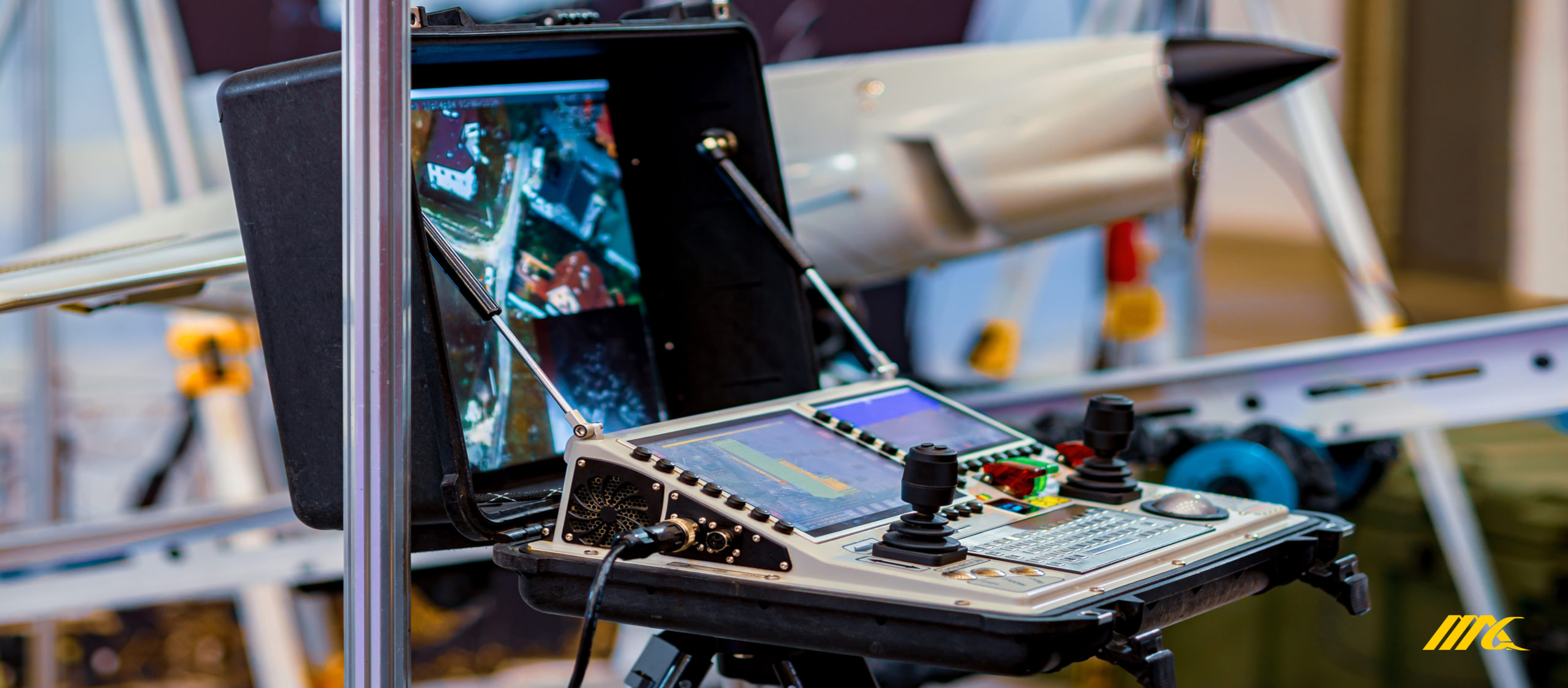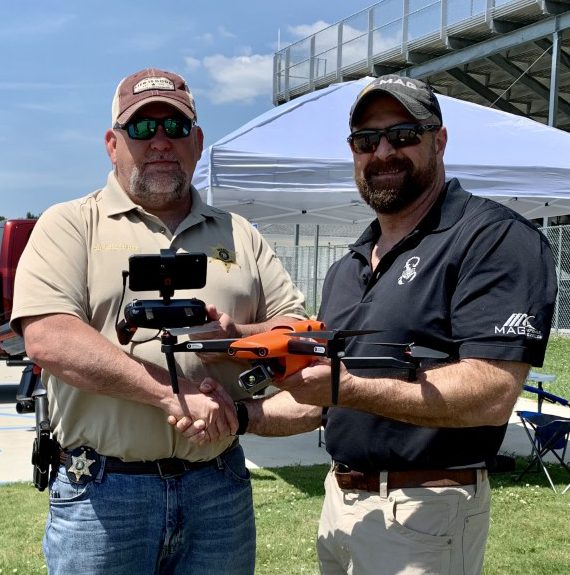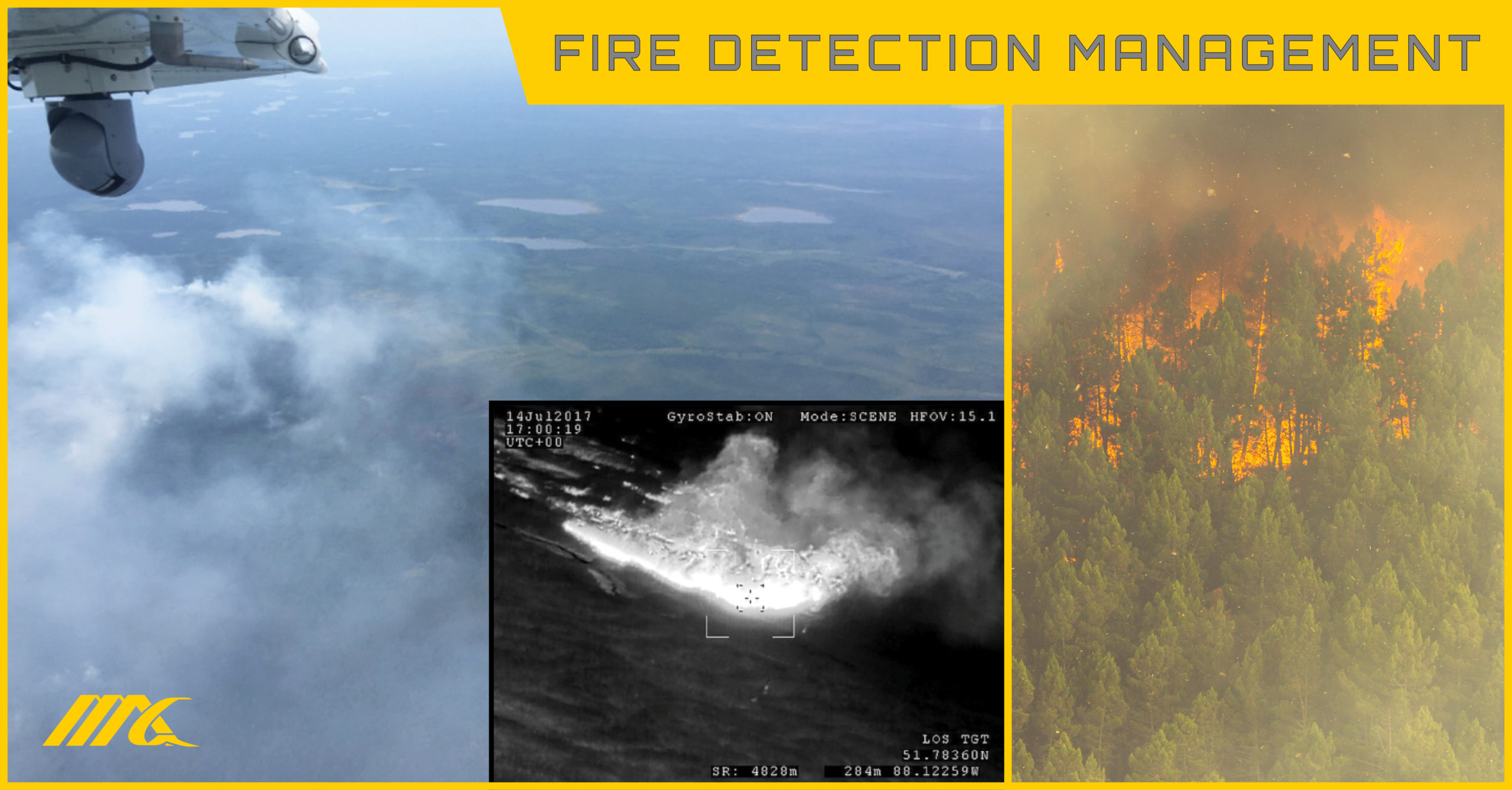Unmanned aircraft systems are revolutionizing & optimizing mission strategies for public safety agencies, our national defense, and international peacekeeping operations. See how they are being deployed around the world to improve efficiency and effectiveness.
 What Are Unmanned Aircraft Systems (UAS)?
What Are Unmanned Aircraft Systems (UAS)?
Unmanned aircraft system (or UAS) is a comprehensive term that represents not only the unmanned aerial vehicle (UAV) but also the operating team and technology (i.e. cameras, software, transmission system) that supports it.
UAS are flown remotely and in addition to the operators and operating technology, usually include a payload specific to its purpose. For instance, farmers can use UAS to distribute insecticides on crops. Civil engineers can use them to inspect bridges for structural integrity. In security and defense applications, they deliver dynamic intelligence and data-gathering capabilities as well as precise and strategic combat support.
 How Do Domestic Public Safety Agencies Use UAS?
How Do Domestic Public Safety Agencies Use UAS?
Click Here To Explore Our Public Safety Unmanned Drone Case Study
According to recent research, about 5,000 public safety agencies in the US are utilizing drone or unmanned aircraft system programs – two-thirds being law enforcement agencies. They have wide and resourceful applications:
Fire & Rescue
UAS supports greater visibility in dangerous and life-threatening situations. They also help firefighters judge whether to enter a structure or not, preventing more loss of life. Later, they can help collect data to assess cause and damage.
In the case of major disasters, like floods, hurricanes, tornadoes, and forest fires, UAS also provides better insight into the scope, where to go, where not to go, and who may need to be rescued. Public safety agencies can generate 3D mapping and high-resolution images, enabling a more efficient response and better relief coordination. In the case of wildfires, UAS can go into areas humans should not and deliver their fire-fighting payload.
Justin Baxter, a Forest Service National UAS Operations Specialist, was recently quoted as saying, “There are certain times that it’s just not safe for us to utilize manned helicopters or fixed-wing aircraft, like nighttime operations or in thick smoke or high winds.”
It’s times like these they deploy their drones which are equipped with multi-sensor cameras that enable them to see thermal heat signatures, at night, and through smoke.
Law Enforcement
Police departments can also use unmanned aircraft systems for a wide range of operations such as reconnaissance in hostage situations, SWAT deployments, or other pre-tactical situations.

Rather than running into danger blind, UAS helps officers see the layout of a building, behind fences, around walls, or cars. They can even be used to communicate with a suspect to attempt de-escalation and resolve the situation peacefully. While an operation is in progress, a UAS can maintain watch overhead and give operations real-time information to increase mission success and survival rates.
In addition, police use UAS for traffic incident reconstruction and forensic investigations. Using drones to determine how an accident happened or to locate evidence dramatically improves operational efficiency.
Unmanned aircraft systems are, obviously, a huge asset in missing persons cases. They lend a bird’s eye view to personnel on the ground and increase the speed and area that a search can be conducted. They can also search certain locations that may be hard for a human to reach.
In Atlanta, officers received a call about a person with a weapon. Police used a drone to locate the suspect hiding between two buildings, and they were able to take the person into custody.
In New York, the NYPD Aviation Unit used a drone equipped with thermal imaging cameras to locate a 14-year-old boy who went missing in a state park. With the help of the UAS, they found him safely within 10 minutes.
 How Are Unmanned Aircraft Systems Deployed For National Security?
How Are Unmanned Aircraft Systems Deployed For National Security?
Domestically, the Department of Defense uses UAS for training, testing equipment, and simulating overseas missions. Of course, globally, unmanned aircraft systems are utilized in so many more ways – potential applications are diverse and dynamic.
The U.S. Military Has Used UAS For:
- Intelligence, Surveillance, and Reconnaissance (ISR)
- Close Air Support
- Cargo & Resupply
- Communications Relay
In addition, a 2022 Congressional Research Service report noted that the Department of Defense expects UAS can replace manned aircraft for missions like:
- Aerial Refueling
- Air-To-Air Combat
- Strategic Bombing
- Battle Management and Command and Control (BMC2)
- Suppression and Destruction Of Enemy Air Defenses
- Electronic Warfare (EW)

The report adds that the “DOD is developing several experimental concepts—such as aircraft system-of-systems, swarming, and lethal autonomous weapons—that explore new ways of employing future generations of UAS.”
MAG has supported numerous international operations with unmanned aircraft systems and can speak to the effective application and impact of UAS for increased security and better defense.
In one case, we supported NATO in Kosovo. We provided specialized technical reconnaissance and surveillance for the NATO Kosovo Force helping them monitor illegal activities, incursions, roadways, lines of communication, and public events.
In another instance, MAG was enlisted by the US Army to provide UAS training, field service repair, depot logistics, and engineering support. In the end, we had:
- Conducted Over 30 SUAS Training Courses Resulting In Over 200 SUAS-Qualified Operators
- Delivered 10,000+ Repaired LRUs to the Inventory Control Point in a 24 Month Period
- Maintained a Zero-Percent Beyond Economically Repairable (BER) Rate on All Electronic LRUs
- Lowered Depot-Level Maintenance Costs By Over 35%
- Reset & Refitted Over 500 SUAS Systems for Re-Issue to The Field.
Over an 18-month period, our warehouse processed 1,377 requisitions, 1,177 incoming shipments, and 1,888 outbound shipments.
We’ve also assisted in international rescue missions. In one case, our UAS were deployed in Africa when a boat capsize and there was no other way to communicate with rescuers. With our system, we were able to spot the boat and help save 16 lives.
Similarly, MAG’s unmanned aerial systems supported the UN and the Democratic Republic of the Congo when Mount Nyiragongo erupted. We were able to station our UAS above the rim of the crater and relay critical information to the UN and government emergency management.
MAG’s Comprehensive, Turnkey Aerial ISR Solutions – Including UAS!
 MAG’s defense solutions feature more than just unmanned aircraft systems. We’ve developed and implemented a full C5ISR program that includes command, control, computers, communications, cyber, intelligence, surveillance, and reconnaissance.
MAG’s defense solutions feature more than just unmanned aircraft systems. We’ve developed and implemented a full C5ISR program that includes command, control, computers, communications, cyber, intelligence, surveillance, and reconnaissance.
In a recent MAG blog, Mastering Missions and Saving Lives With Airborne ISR Systems, we noted that in 2023, the Air Force will focus on “Revitalizing integration of ISR at the Squadron Level – Air, Space, and Cyber’ through its ISR Research Task Force.” In short, they want to find ways to increase “operational agility” and incorporate AI technology into ISR operations. In addition, the Department of Defense (DoD) is prioritizing looking to private industry for technological advancements that are mission ready.
In response to the increasing utilization of UAS and ISR strategies, MAG is making new investments to expand our ISR integration, collection, intelligence processing, and intelligence dissemination capabilities to significantly increase mission effectiveness.
Our Full Suite Of C5ISR Services Includes:
- Multi-Intelligence Data Collection and Processing Such As:
- Electro-Optical Infra-Red (EO/IR) Full Motion Video (FMV)
- LIDAR
- Synthetic Aperture Radar (SAR)
- Hyperspectral Imagery (HSI)
- Signals Intelligence (SIGINT)
- Maritime Patrol Surface Search Radar
- Data Exploitation Using COTS & GOTS Intelligence Analysis Systems and Methods
- Intelligence Dissemination Services Using COTS & GOTS Communications Systems and Protocols
MAG Also Provides:
- Flight Systems, Operations, and Controls for IRS Missions
- ISR Training & Simulation
- Airborne Sensors
- Aircraft Maintenance & Contractor Logistics Support
Want to know more about our UAS or C5ISR capabilities? Contact MAG today, and let’s discuss strategies and solutions.



